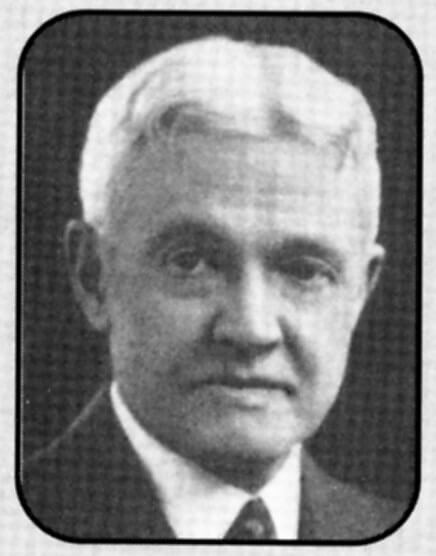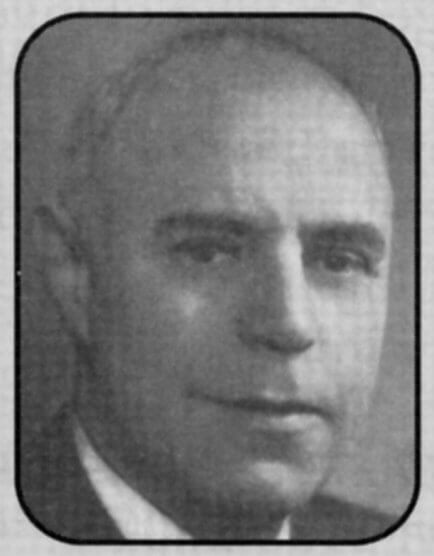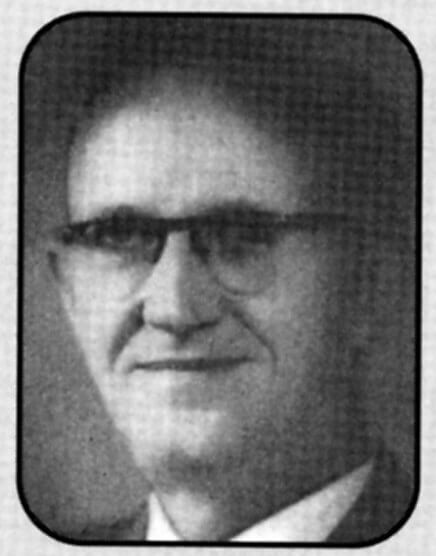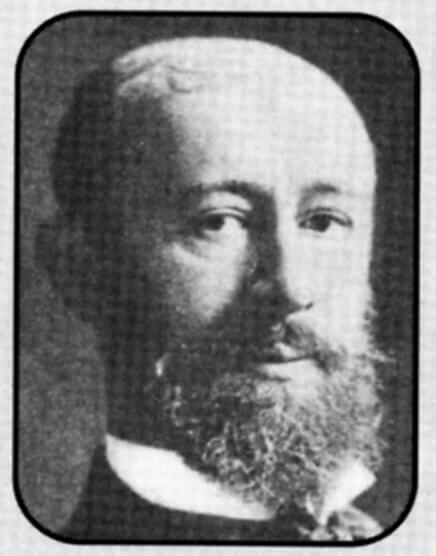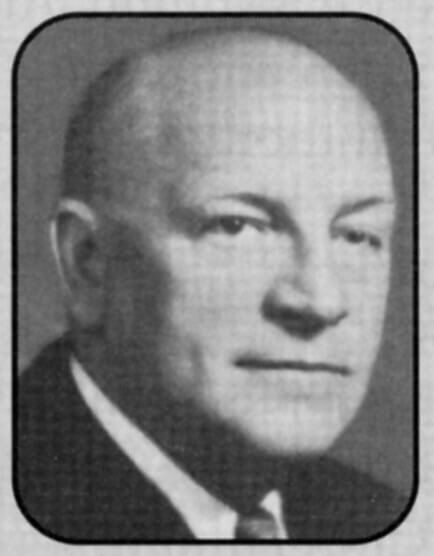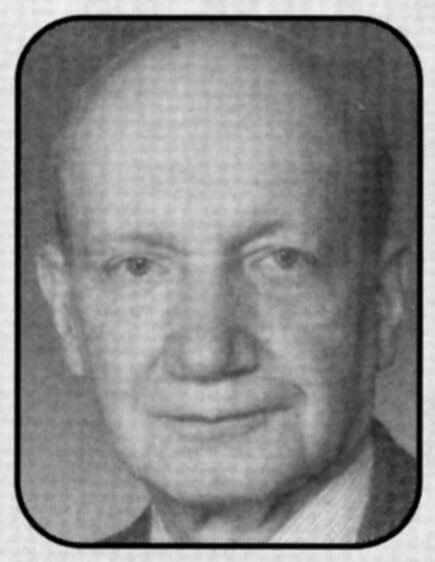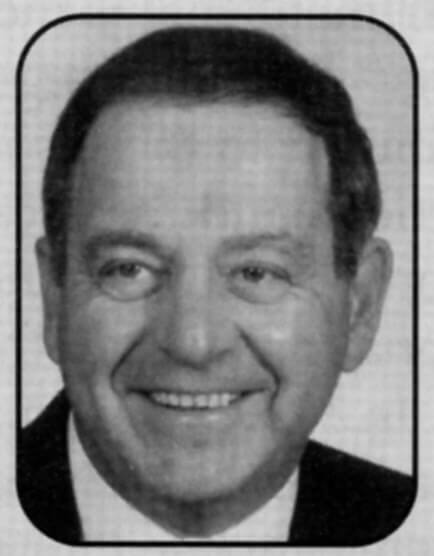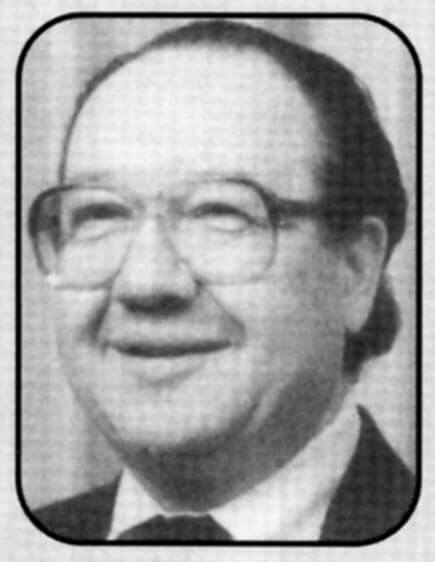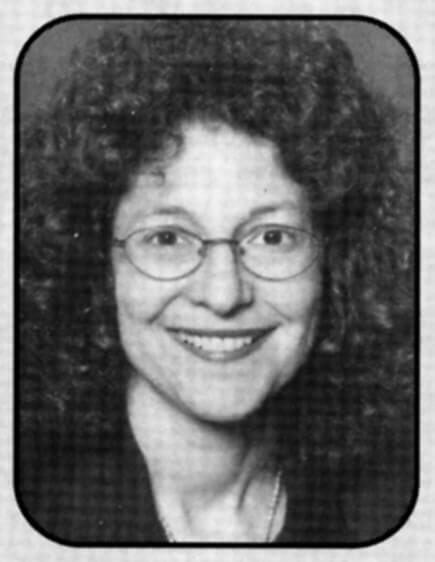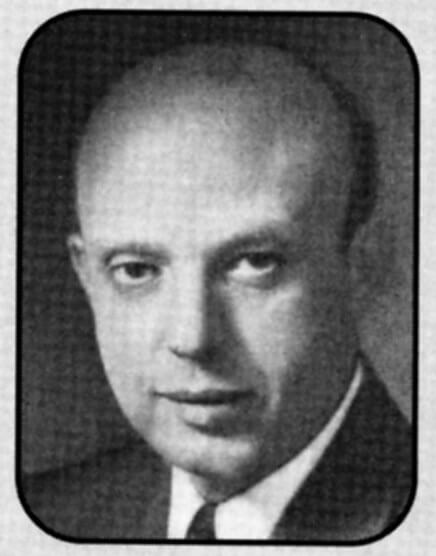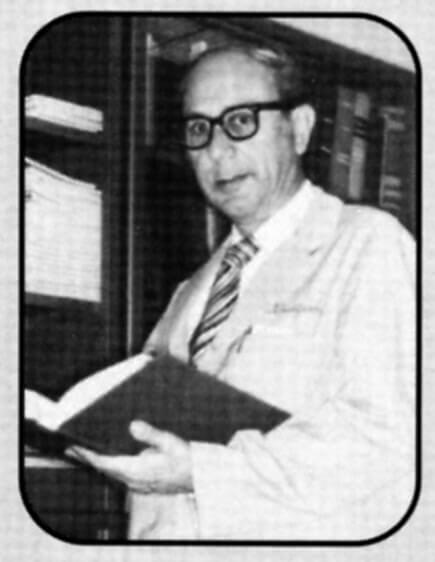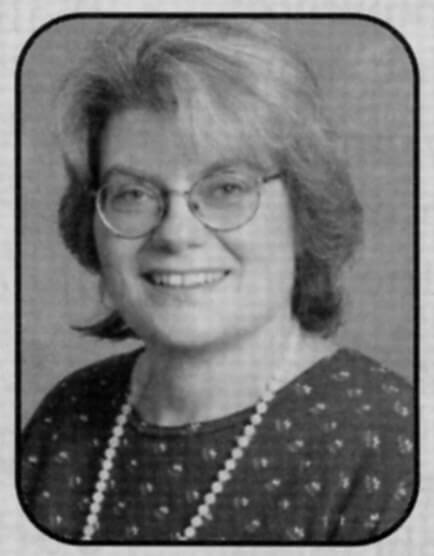By Marshall L. Blankenship, MD
Reprint with permission from Chicago Medicine, vol. 104. n° 12, December 2001
(click on pictures to enlarge)
| Dr. Blankenship, a retired dermatologist, was previously affiliated with Saint Francis Hospital and Health Center. He is senior attending at Rush-Presbyterian-St. Luke’s Medical Center and professor emeritus at Rush Medical College.
Editor’s note: The Chicago Dermatological Society celebrated its 100th anniversary with a Centennial gala in October 2001. To commemorate the occasion, Dr. Blankenship authored the book, « The Chicago Dermatological Society-100 Years of Excellence. » Each member of the CDS was presented with a copy. |
|
|
In the mid-1800s, after three full years of study at medical school and in the hospital, a medical student graduated as a doctor of medicine. He had only the slightest acquaintance with the names of skin diseases, had no knowledge of the principles of dermatology and was wholly ignorant of practical diagnosis and treatment. American physicians often continued their general medical education in European hospitals where they became more familiar with the appearance of skin diseases.
As a result, returning physicians saw the need for improving dermatological care in the United States and made this improvement their duty. A few of these physicians were recognized as having exceptional knowledge of cutaneous diseases and they gradually succeeded in convincing those interested in medical education of the importance of instruction in skin diseases. These dermatologists were the founders of our specialty and initiated dermatological care in Chicago.
The earliest was Dr. Charles Gilman Smith, who had followed this course of education. After his postgraduate training in Europe, he became the first to practice dermatology in Chicago in 1870. Dr. Smith was a member of the first medical board and a member of the medical staff of the new Cook County Hospital.
After serving with the Union Army in the Civil War and receiving his MD degree, James Nevins Hyde moved to Chicago in 1869. As specialists were added to the Rush Medical College faculty, the need for teaching dermatology was increasingly recognized and Dr. Hyde began his teaching career as lecturer in dermatology in 1873, the first teaching of the subject in Chicago. Dr. Hyde added the clinic on skin and venereal diseases to the lectures in 1878 and was appointed as the first professor of skin, venereal and genito-urinary disease at Rush Medical College, and chairman of the first Department of Dermatology in 1879. The founder and organizer of the Chicago school of dermatology, Dr. Hyde made Chicago a center of dermatological training. His influence was to extend nation-wide.
Major contributions began early in his career. The American Dermatological Association was founded in 1876 with Dr. Hyde as charter member. His textbook, A Practical Treatise on Diseases of the Skin for Hie Use of Students and Practitioners, was the only textbook in print for 26 years. As the founder of the Chicago Dermatological Society (CDS), Dr. Hyde became the leader of Chicago dermatologists. Active memberships in the leading dermatological societies in Europe were bestowed on Dr. Hyde. Additionally he was involved in the affairs of Rush Medical College and Presbyterian Hospital.
After four years of postgraduate training, Dr. William Allen Pusey came to Chicago, became associated with the College of Physicians and Surgeons, and was named professor of dermatology in 1894. His efforts were important in the linking of the college with the University of Illinois in 1900. As the department chairman, he lectured and held clinics for 20 years and remained as professor emeritus for 25 years. Dr. Pusey built his own x-ray unit and pioneered the use of roentgen rays in the treatment of skin diseases, leading to the publication of the landmark book Roentgen Rays in Therapeutics and Diagnosis in 1903. His dermatological experiences were recorded in The Principles and Practice of Dermatology. Dr. Pusey served as president of the Chicago Dermatological Society (three terms), the American Dermatological Association, the Chicago Medical Society and the American Medical Association (the only dermatologist to hold this office). For 15 years, he was editor of the Archives of Dermatology and Syphilology.
Dr. Joseph Zeisler trained in Vienna, Austria, with Moritz Kaposi, MD. In 1884 he began practice in Chicago, becoming professor of skin and venereal diseases and chairman of the Department of Dermatology at Northwestern University Medical School. Dr. Zeisler filled practically all positions of honor in dermatology at some time during his lifetime including being a founder of the Chicago Dermatological Society, where he served two terms as president, and the American Dermatological Association, with a term as president.
After several years in general practice, Dr. Oliver Samuel Ormsby joined Dr. James Nevins Hyde on the faculty of Rush Medical College, becoming professor of dermatology and chairman of the Department of Dermatology. Dr. Ormsby revised Dr. Hyde’s textbook, A Practical Treatise on Diseases of the 5km. He also collaborated with Dr. Hamilton Montgomery to produce the bible of many dermatologists during and after postgraduate training. Dr. Ormsby was a charter member of the Chicago Dermatological Society, serving as president for two terms and as honorary president. He was president and honorary member of the American Dermatological Association and president of the Tenth International Congress of Dermatology. Dr. Ormsby was the last living charter member of the Chicago Dermatological Society.
Chicago Dermatological Society 1901-1950
By 1901 dermatology departments were established at Rush Medical College, Northwestern University and the University of Illinois. Twenty physicians practiced dermatology in Chicago. The leaders of these departments and the young progressive dermatologists who began practicing in the late 1800s saw the need for a local dermatological society.
On Feb. 9, 1901, Dr. James Nevins Hyde invited Dns. Zeisien, Pusey, Shalek, Anthony, L.C. Pardee, L.B. Baldwin and EH. Montgomery to an informal dinner at the University Club of Chicago for the purpose of organizing the Chicago Dermatological Society. A constitution and bylaws were written in longhand and adopted unanimously with the aim of the society to be « the cultivation of dermatology in ail its branches. » Oliver Ormsby, R.D. McArthur, H.T. Ricketts, R.R. Campbell, and Louis G. Schmidt were added to the membership as chanter members.
The first clinical meeting was held March 14, 1901, and the first annual meeting in January 1903. Dr. Hyde was elected president, Dr. Zeisier, vice president, and Dr. Pardee, secretary.
In 1911 the purpose of the CDS was rewritten to read :
« The object shah be the study of dermatology and ail its branches, the edification of its individual members in their chosen specialty and the cultivation of a fraternal spirit among its members. » This purpose is the same today.
Dr. Hyde, followed by Dr. Ormsby, and Dr. Pusey, guided and shaped the society’s policies for more than 40 years. Their positions at the CDS meeting were that of respected chiefs at a tribal council. No matter who was presiding at a meeting, their presence alone on jointly made their seats automatically the chair. A discussion that did not have their approval, either by word on look, was regretted by the presenter.
These two leaders drew important dermatologists from the Midwest to the annual meetings. Among the society’s distinguished colleagues invited to membership and who supported and served as officers of the society were: Drs. Martin Engman and William Mook of St. Louis, Udo Wile of Ann Arbon, and Henry Michelson of Minneapolis.
For more than 50 years Dr. Michelson was a vigorous presence at CDS meetings. His mere attendance at the society’s meetings was an inspiration. In 1946 Dr. Michelson presented a president’s gavel to the CDS that is still passed to the incoming president each year.
As the society grew, the meetings gained a nationwide reputation and were the model used to form many local societies in Missouri, Michigan, Minnesota and Ohio.
Until 1926, the early clinical meetings were held in Dr. Ormsby’s office. At nearly every meeting from 1901 to 1930 cases of blastomycosis, lupus vulgaris, all other forms of cutaneous tuberculosis, and all cutaneous manifestations of primary, secondary and tertiary syphilis and lupus erythematosis were presented. Other cases included bromoderma and iododerma, favus, lepra, rhinosclenoma, mycosis fungoides, morphea, bullous diseases and cases for diagnosis. Before 1920 cases were presented without microscope slides.
Dns. Clark Finnerud, Mancus Cano and Samuel Becker demonstrated a unique interest in dermatopathology and provided a resource of future teachers. Dr. Cano was among the dermatologists who founded the modem dermatopathological approach to diseases. He was followed by Drs. Fredenick Szymanski, Samuel Becker, Samuel Becker Jr., Julius Ginsbeng, Bnian Potter, William Caro, David Fnetzin, Maria Medinica, Tony Fu, Anna Eng, and Damnyl Bronson.
No organized training in dermatology existed in the early 1920s. Physicians selected their own method of acquiring knowledge. The local dermatological society was an important part of their training. Before World War 1, there was no graduate training in the United States. When graduate training in Europe ceased, postgraduate training began here and brought change to American dermatology. Dr. Onmsby foresaw the time when physicians would be trained in the United States and make significant contributions.
In 1932, the American Board of Dermatology and Syphilology was incorporated to determine the competence of physicians specializing in dermatology. Six programs chained by CDS members were approved for training. In 1938 the American Academy of Dermatology and Syphilology was formed. Members of the CDS were leaders in the formation of these organizations.
Dr. Samuel W. Becker was appointed as the initial head of the newly formed section of dermatology at the University of Chicago in 1927. Dr. Becken built his department and engaged in organized research in which every member of his staff participated. His interest in pathology led to the first dermatohistopathologic laboratory in Chicago. The Society for Investigative Dermatology was largely Dr. Becker ‘s creation. In spite of skeptics, this new interest in dermatological research and pathology produced an organization and journal, the Journal of Investigative Dermatology, which became internationally admired.
Dr. Anthun W. Stihhians followed Dr. Zeisler from 1919 to 1940 as chairman of the Department of Dermatology at Northwestern University. Dr. Stillians was a member of the first American Board of Dermatology and Syphilology. His department was chosen as one of the first training programs approved by the newly established board and he was chosen as honorary president of the Chicago Dermatological Society.
Following Dr. Pusey as chairman of the Department of Dermatology at the University of Illinois was Francis E. Senear, MD, who had trained at Dr. Udo Wile’s department at the University of Michigan. His long and distinguished careen brought great luster to the University of Illinois and had a profound influence on the practice of dermatology in Chicago.
A much-admired man, Dr. Senean served as president of the Chicago Dermatological Society, the American Dermatological Association, the American Board of Dermatology and Syphilology, and the American Academy of Dermatology and Syphilology. He was president elect of the Twelfth International Congress of Dermatology at the time of his death.
The Chicago Dermatological Society was of great importance in the development of the American Academy of Dermatology and Syphilology. In discussing the Academy’s success, Herman Beerman, MD, credited « the series of devoted and capable secretaries and the Chicago group who gladly and competently shouldered the responsibility of this prodigious task. » The AAD annual meeting was held in Chicago at the Palmer House for 18 consecutive years.
Members of the CDS have been leaders in the projects of the Academy including: formation of the American Society for Dermatopathology, the Association of Professors of Dermatology, the Dermatology Foundation, the National Program for Dermatology, the American Society for Dermatologic Surgery, the National Match Program for Dermatology, and the Journal of the American Academy of Dermatology. In 1936, the editor of the Archives of Dermatology and Syphilology, Dr. Pusey, wrote in an editorial : « Society transactions are more widely read than any other material published in the Archives and for most readers there is no department that is more interesting. » The CDS regularly contributed to these society transactions and these case presentations greatly enhanced the national prestige of the society.
In 1939, women, who had already been attending meetings, were proposed for membership. A decision to admit women on the same basis as men was made. Dr. Minnie Pearstein became the first woman elected to membership, followed by Drs. Evangeline Stenhouse and Irene Neuhauser, who became the first woman president.
Dr. Stephen Rothman, chairman of the section of dermatology at the University of Chicago from 1942 to 1960, left a true legacy to Chicago dermatology. His book, Physiology and Biochemistry of the Skin, served as a source and inspiration for the development of dermatological research. Allan Lonincz, MD, summarized Dr. Rothman’s career when he wrote that Dr. Stephen Rothman was « The unchallenged master of investigative dermatology. His impact on his beloved specialty was such that dermatology can indeed be divided into two eras: Before and after Rothman. »
Chicago Dermatological Society : 1950-2001
Herbert Ratiner, MD, chaired the Department of Dermatology at Northwestern from 1951 to 1962, after Edward Oliver, MD. During bis chairmanship three laboratories were added for research in basic sciences. While Dr. Ratiner was editor of the Archives of Dermatology, the journal grew in stature and presented to the world the true image of American dermatology. On becoming elected to the CDS presidency, Dr. Ratiner said, « It is a signal honor to be president of this Society for I am told by people who should know that this is one of the best dermatological societies in the country. They attribute it to the fact that our presentations are informal and our discussions free and easy. »
In the 1970s practicing dermatologists developed an inter-est in dermatological surgical procedures such as grafts and flaps, hair transplantation and scalp reduction, Mohs surgery, lasers, dermabrasion and cnyosurgery. New procedures such as tissue implants, chemical peels, sclenotherapy, liposuction and botox continued to be developed. CDS members in the forefront of dermatological surgery include Henny Roenigk, Jr., June Robinson, Brian Cook, J.B. Pinski and Jerome Garden.
In the 1980s pediatric dermatology became a dermatological subspecialty. CDS members who are leaders in pediatric dermatology are Drs. Nancy Esterly, Lawrence Solomon, Amy Paller, David Fretzin, Lynin Enamo and Anthony Mancini.
Conclusion
Since 1901 an unbroken succession of leaders has stood out in the histony of denmatology and of the CDS. Among this long une of leaders are Dr. Adolph Rostenbeng, Jr., who followed Dr. Marcus Caro at the University of Illinois and Dr. Samuel Bluefarb, who followed Dr. Rattner at Northwestern. More recent department chairmen were Drs. Lawrence Solomon at the University of Illinois, Frederick Maîkinson at Rush Medical School, Alian Lonincz at the University of Chicago, Henry Roenigk, Jr., at Northwestern, John Weiss at Loyola University and Sidney Bansky at Cook County Hospital. Drs. Lonincz, Maîkinson, and Solomon have been awarded the Chicago Dermatological Society’s Gold Medal for outstanding service and academic excellence.
The most recent generation of department chairmen in Chicago include Dns. Virginia Fiedler at the University of Illinois, David Woodley and Brian Cook at Northwestern, Michael Tharp at Rush, Keyoumars Soltani and James West at the University of Chicago, Mary Massa and June Robinson at Loyola, and Darryl Bronson at Cook County Hospital. The additional CDS members who have distinguished themselves over the past 100 years and who have contributed to the society’s dermatological eminence are too numerous to mention.
At 100 years, the purpose of the CDS in presenting and discussing cases remains the same. At every CDS meeting, a new morphological variation of a disease or a disease never previously seen even by experienced dermatologists is presented. During the past 20 years, with the significant advances made in technology and therapy, the data included in the protocol of case presentations have changed the emphasis of the diagnostic and treatment discussions. In 1994, continuing education by the Chicago Dermatological Society was recognized when the American Academy of Dermatology presented the Excellence in Education Award to the CDS.
The changes that have Occurred in the practice of dermatology-peer review, recertification, Medicare, Medicaid, professional liability, continuing education, coding, and direct access have all entered into discussions. James Ertie, MD, legislative coordinator, has led trips by CDS members to the legislature in Springfield concerning tanning and tattoo parlors. The CDS has established a research and education fund supported by society members for clinical on laboratory research by dermatologists in Chicago.
With the clinical cases and informal discussions, there are few, if any, dermatoses that have not been presented at CDS meetings. The value of the diffusion of clinical knowledge among society members is impossible to estimate. Membership has grown from the original 14 founders and charter members in 1901 to more than 300 in 2001. Over the past 100 years, the bylaws have been altered only slightly. The history, growth and sphere of influence of the Chicago Dermatological Society have given it an enviable position in American and world dermatology.





